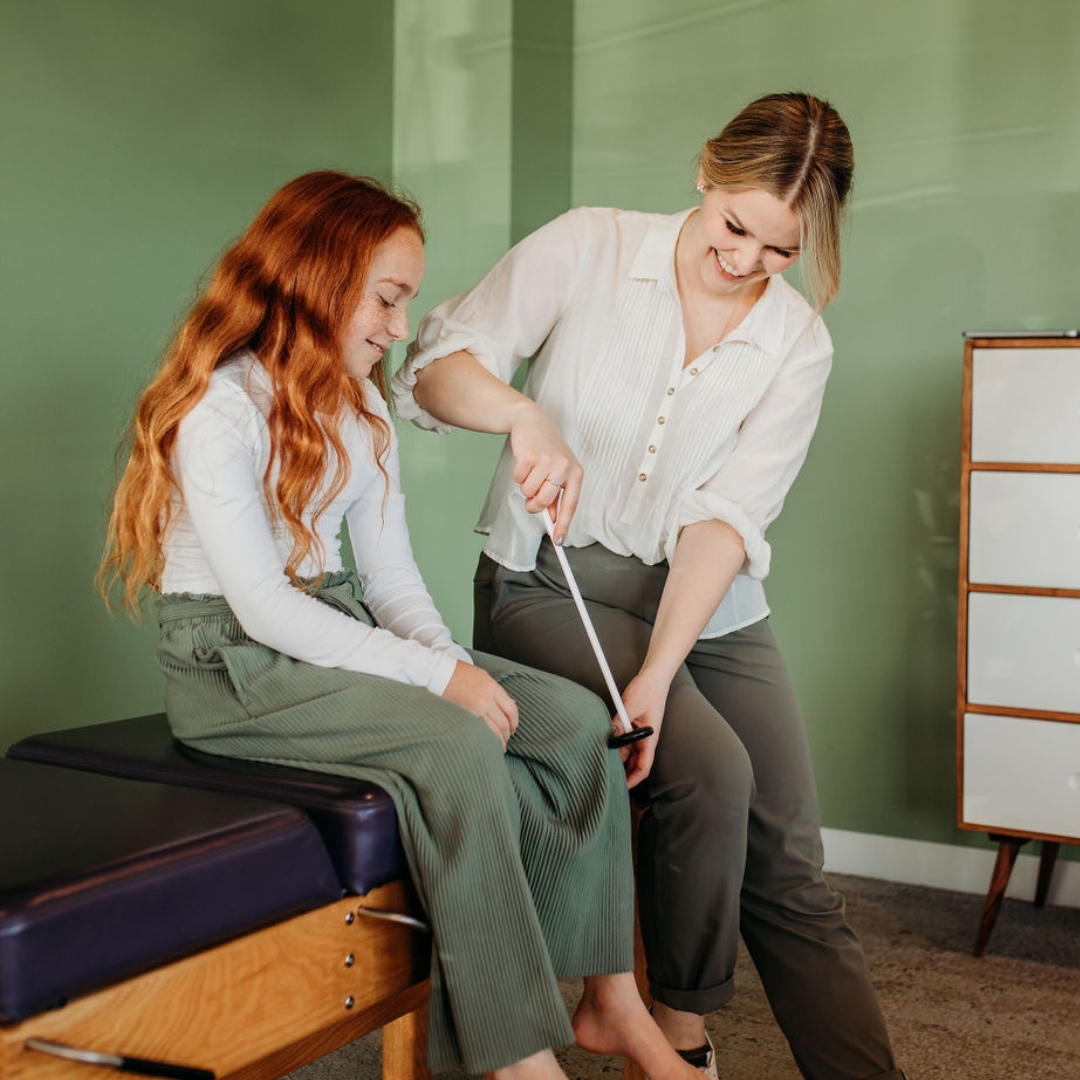Imagine entering a world where everything is new, exciting, and a bit overwhelming. This is the reality of a newborn baby.
Their brains are undergoing incredible development, forming the foundation for all future learning, movement, and social interaction. At the heart of this development lie primitive reflexes, a set of involuntary movements crucial for survival and early development.Primitive reflexes are like pre-programmed responses, controlled by the brainstem, rather than the conscious mind. They emerge during pregnancy and play vital roles in feeding, posture, and balance. But what happens to these reflexes as your child grows? Let's embark on a journey to understand these marvels of nature and their impact on your child's development.
The Symphony of Reflexes:
- Moro Reflex (Startle reflex): This reflex kicks in when a baby feels a sudden loss of support, mimicking a falling sensation. Arms extend out and then embrace like a hug, resembling a "startle response." This reflex typically integrates by 5 months, transitioning into a more controlled startle reflex.
- Babinski reflex: stroking the sole of the foot causes the big toe to extend and other toes to spread. This reflex helps prepare the feet for walking and influences overall movement, integrating by 12-24 months.
- Asymmetric Tonic Neck Reflex (ATNR): When you turn a baby's head to one side, the arm and leg on that side extend, while the arm and leg on the other side contract. This crossed pattern helps with posture and coordination during the first few months, integrating by 7 months.
- Tonic Labyrinthine Reflex (TLR): This reflex helps with head control and balance. When a baby's head is tilted back, their arms and legs extend (extensor response), and vice versa when the head is tilted forward, their arms and legs flex (flexor response). It usually integrates around 24 months.
- Galant Reflex: When you stroke a baby's back along the side of the spine, their body curves towards the side stimulated. This helps with postural development and coordination, integrating by 10 months.
- Rooting Reflex: Touching the corner of a baby's mouth triggers a turning movement towards the stimulus, aiding in finding the breast or bottle for feeding. This reflex integrates by 6 months.
- Palmar/Plantar Grasp Reflex: Touching a baby's palm/sole of the foot leads to an automatic closing of their fingers/toes, allowing them to grasp objects instinctively. This reflex integrates by 8 months, laying the foundation for voluntary grasping.
- Snout Reflex: Stroking the upper lip or around the nose causes a baby to protrude their lips, facilitating latching onto the breast for feeding. This reflex integrates by 4 months.
- Symmetric Tonic Neck Reflex (STNR): When a baby lies on their back and their head is tilted back, their arms and legs extend (extensor response). Tilting the head forward leads to flexion in the arms and legs (flexor response). This reflex typically integrates by 24 months.
Beyond Infancy: Integration and Potential Concerns
While these reflexes are essential for early development, they are meant to be temporary. As your child's brain matures, these reflexes gradually integrate, meaning they become less prominent and eventually disappear. This allows for the activation of more complex postural reflexes and development of more voluntary and controlled movements.
However, research suggests that in some cases, these reflexes might not integrate fully, leading to potential challenges in various areas of a child's life. Here's what recent research suggests:
- Social and emotional development: Retained reflexes may be linked to difficulties with attention, focus, emotional regulation, and social interaction [1].
- Immune function: Studies suggest a possible connection between retained reflexes and a weakened immune system, potentially making children more susceptible to allergies and infections [2].
- Autonomic function: Retained reflexes might impact the body's automatic functions like digestion, sleep, and heart rate regulation [3].
It's important to remember that these are potential associations, and every child's development is unique. However, seeking professional guidance can be beneficial if you observe concerns related to your child's development and suspect retained primitive reflexes might be playing a role.
Chiropractic Care utilises specific techniques that aim to support the integration of persistent primitive reflexes. These techniques often involve gentle adjustments and exercises targeting specific areas and stimulating the nervous system. At Australian Children's Chiropractic Centre our team are advanced trained in paediatric assessment to identify persistent primitive reflexes and work with your family to bring a new level of education and activity to support integration of these reflexes.
Want to know more? Find out about our next Primitive Reflexes Workshop here.
Disclaimer: This blog is for informational purposes only and should not be taken as medical advice. Always consult with a qualified healthcare professional regarding your child's health and development.
References:
- [1] Melillo, R., Leisman, G., Machado, C., Machado-Ferrer, Y., Chinchilla-Acosta, M., Kamgang, S., ... & Carmeli, E. (2022). Retained Primitive Reflexes and Potential for Intervention in Autistic Spectrum Disorders. Frontiers in Neurology, 13, 922322.
- [2] Jaiswal, M., & Morankar, R. (2017). Understanding primitive reflexes and their role in growth and development: A review. International Healthcare Research Journal, 1(8), 243-7.
- [3] Melillo, R. (2016). Persistent primitive reflexes and childhood neurobehavioral disorders. Neuroplasticity in learning and rehabilitation, Chapter4, 65.


Comments